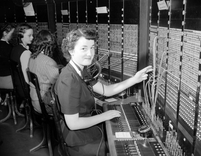
Making a long distance call required Operator assistance. You could call station-to-station which meant whoever answered the phone had to pay, even if it wasn't the household member you wanted. Asking for person-to-person was safer to reach the right person, but was more expensive. Our parents who had lived through the Depression and WWII were quite cognizant of saving every penny, so long distance calls were short and sweet. If you were the tricky sort, you could call person-to-person and not pay, but still gather a bit of information from the recipient. There would be three people on the line at one time, all able to hear each other: you the caller, the Operator, and the recipient. The Operator would be trying to ask permission of the recipient to pay for the call, and you could cleverly slip in some information to your intended without ever completing the whole call. Such as, the party on the other end might hesitate to understand who was calling or agree to the call, and you as the caller could relay some information to the Operator which was also heard by the recipient. "Operator, I'm trying to reach my Aunt Betty and tell her we got home okay," etc.
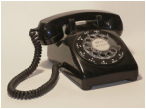
Growing up, we had only one phone like this black desk model. It was in our living room. There was very little privacy with any call, and since we watched television in this room, a call during a favorite show was considered an interruption. Receiving calls during supper were not allowed - another interruption.
Another privacy issue was the party line. When we picked up our receiver, there could be one of four other families talking. We would have to wait our turn to make a call, after their call concluded. If you were in a hurry, or had an urgent need, you could ask the party to hang up and let you dial. There was no guarantee they would, and hogging the line was not unusual. Eavesdropping was common and you had to listen carefully for clicks or breathing or background noises that didn't belong in your conversation. It was several years before we got our own private line, and no longer had to wait or be interrupted.
Our phone number began with letters, RA for RAymond. There were other prefixes, depending on which neighborhood you lived. A popular radio song of the day was "BEechwood 4-5789" by the Marvelettes and everyone understood that dialed B was 2, and E was 3. Those letters on the dial were important for calling, as opposed to all the texting done with them nowadays. In the '60s our phone numbers were converted to all numerals.
Another privacy issue was the party line. When we picked up our receiver, there could be one of four other families talking. We would have to wait our turn to make a call, after their call concluded. If you were in a hurry, or had an urgent need, you could ask the party to hang up and let you dial. There was no guarantee they would, and hogging the line was not unusual. Eavesdropping was common and you had to listen carefully for clicks or breathing or background noises that didn't belong in your conversation. It was several years before we got our own private line, and no longer had to wait or be interrupted.
Our phone number began with letters, RA for RAymond. There were other prefixes, depending on which neighborhood you lived. A popular radio song of the day was "BEechwood 4-5789" by the Marvelettes and everyone understood that dialed B was 2, and E was 3. Those letters on the dial were important for calling, as opposed to all the texting done with them nowadays. In the '60s our phone numbers were converted to all numerals.

We had a little sand timer, like an hour glass, by the phone to time our long distance calls. Three minutes was about the limit. There were no speaker phones, so when we called family for Christmas, we would have to quickly pass the phone around to each person, or just have everyone yell a greeting all at once. If you received a collect call, you pretty much expected it to be bad news.
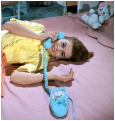
Rotary phone styles changed in the late '50s with the Princess phone geared towards women and teenage girls. The dial lighted up when you picked up the receiver and it came in almost every color except black: pink, white, beige, turquoise, and blue at first, adding yellow, moss green, gray and red.
The next big change in phones was push buttons rather than a dial. It seemed so futuristic at the time.
The next big change in phones was push buttons rather than a dial. It seemed so futuristic at the time.
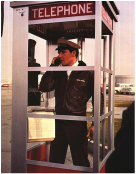
Since there were no cell phones, making a call when you were not home was a challenge. First, you had to find a booth. If you were lucky, you could find one at a gas station, train station, bus station, or city corner. Next, it helped to know the number. The booth might have a local phone book attached by a metal cord filled with white pages for residences and yellow pages for businesses. Sometimes the pages were torn out, or the whole book could be missing. Your last resort was to ask the Operator for assistance. Lastly, you had to have the right coins to insert into the phone. I remember dimes for local, later escalating to 25 cents. Long distance calls that were not collect required pre-payment before the Operator put your call through. The call would be terminated when the money ran out if you could not add more coins, sometimes in mid-sentence.
I was never one to stay on the phone for hours at a time. Guess that's why I'm content now with my old Nokia flip-phone which works just fine. We're threatening to cancel our land line, but haven't cut the cord, yet.
"Let your conversation be always full of grace, seasoned with salt,
so that you may know how to answer everyone." Colossians 4:6
I was never one to stay on the phone for hours at a time. Guess that's why I'm content now with my old Nokia flip-phone which works just fine. We're threatening to cancel our land line, but haven't cut the cord, yet.
"Let your conversation be always full of grace, seasoned with salt,
so that you may know how to answer everyone." Colossians 4:6
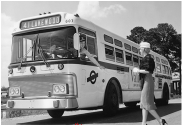

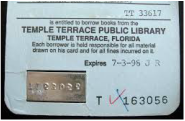
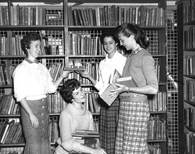
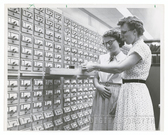

 RSS Feed
RSS Feed
